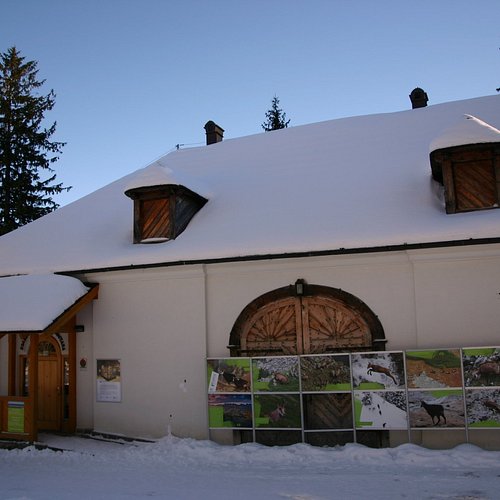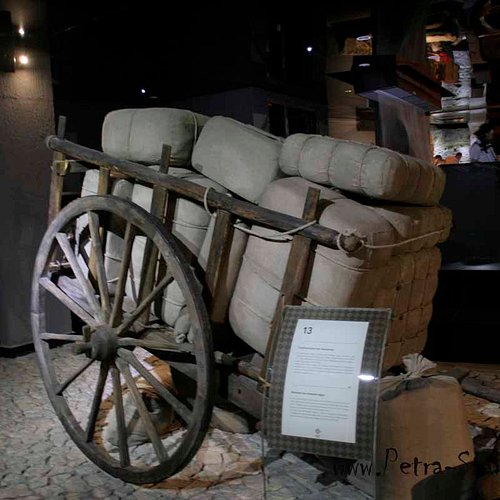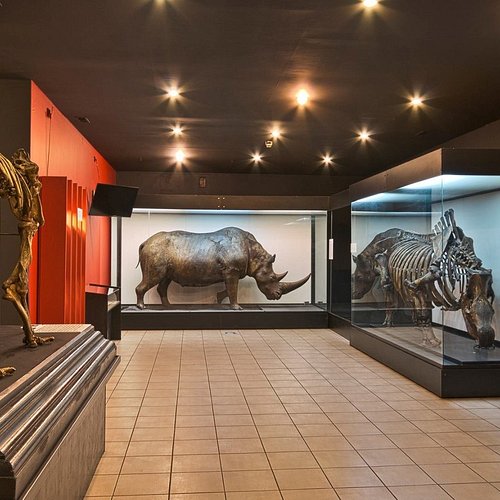The 9 Best Natural History Museums in Lesser Poland Province, Southern Poland
Discover the best top things to do in Lesser Poland Province, Poland including Arthropoda - Butterfly Museum, Collection of Minerals and Fossils of Olkusz and the Polsih Jura, Kolekcja Antoniego Kocyana, Muzeum Agatow W Rudnie, Muzeum Krakowa - Rynek Podziemny, Pieniny National Park entrance pavilion, Muzeum Przyrodnicze, Geological Museum of the Polish Academy of Sciences, Muzeum Przyrodnicze Instytutu Systematyki i Ewolucji Zwierzat PAN.
Restaurants in Lesser Poland Province
1. Arthropoda - Butterfly Museum
Overall Ratings
5.0 based on 35 reviews
The exhibition is the largest permanent display of world's butterflies in Poland. Over five thousand (5049) specimen from all over the world can be viewed. Realised in 2009 by Jacek Kobiela and his son Filip Kobiela, the collection is a crowning of the over 35 year lasting passion of the former. Together, the two represent the second and the third generation of collectors in the family. They continue the legacy of Prof. Stanislaw Fischer, who established the Bochnia Museum in 1959, which currently bears his name. ,,Arthropoda's" collection includes an overview of day and night butterflies divided into families and genuses present in all of the world's continents. The collection shows arthropods - the biggest group of animals living on earth: day and night butterflies, beetles (Poland and world), scorpions, mantes, hemiptera. Species from around Bochnia comprise a substantial part of the collection. The exhibition is complemented by a selection of macro pictures of butterflies and beetle heads shot by Filip Kobiela. Butterfly classification is based on the taxonomy of Linnaeus, who first introduced latin binomial nomenclature describing biological species. The museum presents species, whose appearance and biology ilustrate various natural phenomena - a moth doesn't have to be grey and a butterfly can be a leaf, an owl or a tiger.
2. Collection of Minerals and Fossils of Olkusz and the Polsih Jura
Overall Ratings
5.0 based on 1 reviews
In a population of several thousand exhibits collection we can admire about 30 types of minerals mined in Olkusz mines. Arouse interest in the brush calcite and galene with unusual colors and shapes, as well as crystals of galena, marcasite and sphalerite. The second part of the collection formed the fossilized ammonites, belemnites and corals that lived in the area before 150 million years ago
3. Kolekcja Antoniego Kocyana
4. Muzeum Agatow W Rudnie
5. Muzeum Krakowa - Rynek Podziemny
Overall Ratings
4.5 based on 3,306 reviews
The Rynek Underground exhibition presents not only Krakow’s rich history, but also the connections between the city and mediaeval Europe’s chief centres of trade and culture. Moreover, it portrays the significance of the capital of Poland in the operation of the Hanseatic League. The real historical objects on display, just to mention 14th-century coins, decorations, and pottery, are proof of the European cultural and trade exchange that continued here incessantly for hundreds of years. The tourist route under the Main Market Square leads between the stone and brick walls of the cellars of former trading sites, including the Kramy Bolesławowe Stalls, Kramy Bogate Stalls, the Great Scales, and the Cloth Hall. Opening hours: Winter season (November – March) Monday, Wednesday - Sunday 10.00-20.00 Tuesday 10.00-16.00 Summer season (April – October) Monday 10.00-20.00 Wednesday - Sunday 10.00-22.00 Tuesday 10.00-16.00 Exhibition is closed on every second Monday of the month.
Reviewed By joannepY8606YI
I went in to this museum when it was recommended to me by a local tour guide and I’m so glad I did , because of Covid everyone had to wear gloves inside as alot of the information was on interactive touch screens. I spent about three hours in the museum .Lots of interesting things to look at and lots of information to read on the touch screens .While I was there not many people actually bothered with the touch screens but if you do there is lots of information about the exhibits .The selections of short films you can watch at the end of the exhibition were very interesting and gave you a lot of information about the history of Krakow .Great museum if you make the effect to use the interactive screens on offer to understand what you are looking at .
6. Pieniny National Park entrance pavilion
7. Muzeum Przyrodnicze
8. Geological Museum of the Polish Academy of Sciences
Overall Ratings
4.0 based on 7 reviews
9. Muzeum Przyrodnicze Instytutu Systematyki i Ewolucji Zwierzat PAN
Overall Ratings
3.5 based on 63 reviews
Muzeum Przyrodnicze ISEZ PAN w Krakowie udostępnia swoje zbiory w budynku dawnej „Łaźni Rzymskiej” przy ul. św. Sebastiana 9 w Krakowie. Muzeum w tym miejscu otwarto w styczniu 1993 roku, wcześniej zbiory gromadzone były w budynku PAU przy ul. Sławkowskiej. Historia muzeum sięga swoimi korzeniami roku 1865, kiedy to utworzona Komisja Fizjograficzna Towarzystwa Naukowego Krakowskiego, rozpoczęła gromadzenie zbiorów. Łączna liczba zgromadzonych obecnie eksponatów to ponad 2 miliony okazów. Najcenniejszym z nich jest jedyny na świecie, zachowany w stanie idealnym, okaz nosorożca włochatego. Ten wyjątkowy eksponat znaleziono w kopalni wosku ziemnego - ozokerytu w 1929 r. w Staruni (Ukraina). Dzięki obecności ozokerytu, ropy naftowej i solanki zwierzę zachowało się w tak doskonałym stanie a jego wiek szacuje się na ponad 30 tysięcy lat.









